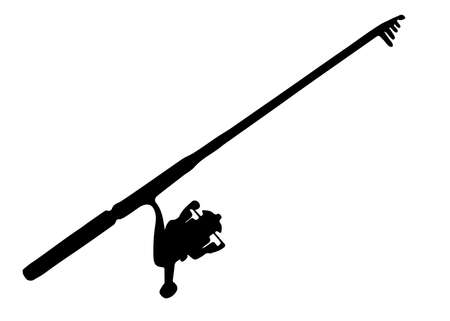The Allure of British Fly Fishing: A Timeless Tradition
Fly fishing in the UK is far more than a pastime—it’s an enduring ritual woven into the very fabric of British countryside culture. Along storied riverbanks and misty lochs, anglers have cast their lines for centuries, drawn by the quiet magic of nature and the promise of a wild trout’s elusive rise. From the chalk streams of Hampshire to rugged Highland burns, each waterway boasts its own character and challenges. This heritage is reflected not only in the whispered tales exchanged at local pubs but also in the kit that’s become synonymous with the sport: waxed jackets, classic Hardy reels, and, of course, a sturdy pair of wellies ready for unpredictable British weather. Whether you’re seeking solace on a secluded beat or swapping stories with fellow enthusiasts at dawn, fly fishing here is as much about tradition and connection as it is about landing that perfect fish. Before delving into seasonal secrets and hidden gems across the UK, let’s appreciate the timeless allure that continues to inspire generations of anglers.
Spring’s Awakening: Secret Streams and Wild Trout
As the British countryside shakes off winter’s chill, spring breathes new life into hidden waterways. This is when dedicated fly fishers know to seek out lesser-known brooks and chalk streams, where wild trout begin their seasonal ballet beneath dappled sunlight. Unlike the famed beats of the Test or Itchen, these secret stretches promise solitude and a genuine connection with nature—perfect for those who relish both refined kit and quiet observation.
Where to Cast: Hidden Gems Across the UK
While some spots are jealously guarded by locals, there are still discreet waters open to the curious angler. Explore the tributaries of Wiltshire, Hertfordshire’s shaded becks, or the mossy runs tucked away in Northumberland. Each location boasts its own subtle magic as mayfly hatches awaken hungry trout.
| Region | Secret Stream | Best Time to Fish |
|---|---|---|
| Wiltshire | Bourne Brook | Late April – Early June (Mayfly hatch) |
| Hertfordshire | Mimram Tributaries | May – Mid June (Cool mornings best) |
| Northumberland | Coquet Upper Reaches | Mid May – Late June (Evenings optimal) |
| Dorset | Piddle Side Channels | Early May – Early July (After rainfall) |
The Magic of Chalk Streams
The UK’s chalk streams, with their gin-clear water and gentle gradients, offer unique fly fishing experiences in spring. As aquatic insects emerge in abundance, wild trout become bold—making this the most rewarding period for sight-fishing with delicate dry flies. For those in-the-know, early morning or late afternoon sessions can deliver exhilarating rises just as birdsong fills the air.
Tactics for Success
Patience and finesse are your allies on these intimate waters. Opt for light tackle—a 3wt rod paired with fine tippet—and match your flies to local insect life. Consider classic British patterns like the Greenwell’s Glory or an Olive Dun during peak hatches. Above all, tread softly; these secretive trout reward anglers who blend quietly into their springtime surrounds.

3. Summer Hideaways: Highland Lochs and Stillwater Gems
When the British summer stretches out its long, golden evenings, there’s no finer pursuit than escaping to Scotland’s wild Highland lochs and secluded stillwaters. These lesser-known gems—think Loch Awe’s quieter banks or tucked-away corners of Lake Vyrnwy—offer fly fishers a rare sense of solitude amid breathtaking landscapes. Timing is everything; aim for those lingering twilight hours when trout rise eagerly, and the wind settles into a soft hush across the water. Yet with summer’s warmth comes the notorious midge. Seasoned anglers swear by lightweight buffs, natural repellents, and keeping movement gentle to avoid stirring up clouds of these persistent companions. Remember, etiquette runs deep in these tranquil places: always seek local permission where necessary, respect both bank and boat space, and leave each spot as untouched as you found it. With a dash of patience and a well-chosen dry fly, you’ll find that these hidden waters yield some of the most memorable sport—and stories—of the season.
4. Autumn Magic: Salmon Runs and Quiet Borders
As summer’s golden haze gives way to the crispness of autumn, the UK’s fly fishing scene enters a quietly spectacular phase. Nowhere is this more enchanting than along the secluded riverbanks of Scotland and the Borders region, where the seasonal migration of Atlantic salmon transforms both landscape and sport. Early mornings bring a gentle mist rolling across the water, setting the scene for an experience steeped in both tranquillity and tradition.
The Rivers Tweed, Dee, and Tay come alive with activity as salmon make their epic journey upstream. Anglers who favour patience over crowds will find these rivers offer not just excellent sport but also a chance to immerse themselves in nature’s changing tapestry. The rustle of fallen leaves underfoot, the scent of wet earth, and the sight of salmon leaping through swirling currents—these moments are heightened by the knowledge that you’re treading the same banks as generations before you.
Top Scottish & Borders Autumn Salmon Locations
| River | Region | Best Time | Local Tip |
|---|---|---|---|
| Tweed | Borders | September–November | Try early mornings for fewer anglers and lively fish activity. |
| Tay | Perthshire | October–November | Focus on deeper pools after heavy rainfall. |
| Dee | Aberdeenshire | September–October | Misty dawns often yield the best bites. |
Savouring Solitude Along Secluded Banks
If it’s peace you seek, venture off well-trodden paths to quieter stretches near Kelso or Banchory. Here, fly fishing becomes almost meditative—just you, your rod, and the subtle rhythms of nature. The gentle soundscape is punctuated only by the splash of a rising fish or the call of migrating geese overhead. For those seeking both sport and scenery, autumn in Scotland and the Borders is unmatched.
Winter Wisdom: Chalkstream Grayling and Wild Horizons
The British fly fishing calendar doesn’t close its pages when winter’s chill descends. In fact, for the discerning angler, winter unveils a quieter, more contemplative side to the sport—one shaped by frost-laced banks, low-slung sun, and the promise of the elusive grayling. Southern England’s chalkstreams, such as the Test, Itchen, and Avon, become tranquil sanctuaries during these colder months, inviting both seasoned regulars and hardy newcomers to embrace their unique winter magic.
Chalkstream Charms in the Frost
When most rivers retreat beneath icy silence, the crystal waters of chalkstreams remain remarkably clear and steady in flow thanks to their spring-fed origins. This makes them perfect for targeting grayling—the ‘Lady of the Stream’—whose subtle takes and spirited fights warm even the coldest fingers. Wrapped up in waxed jackets and woollen hats, anglers wade into gin-clear runs where sight-fishing is still possible. Permits are often easier to come by in winter, granting you rare solitude on some of the UK’s most storied beats.
Essential Gear for Cold-Weather Comfort
Success—and comfort—in winter fishing hinges on preparation. Layering is key: think merino base layers beneath tweed or technical outerwear, topped with fingerless gloves that let you tie knots without losing all sensation. A flask of strong tea and a sturdy wading staff are just as vital as a box of tiny nymphs and delicate tippet. Remember, subtlety reigns supreme; grayling demand finesse with small bugs like pink shrimps or Czech nymphs gently trundled along gravelly seams.
Practical Tips for Winter Waters
In the depths of winter, timing becomes everything. Midday—when any warmth coaxes insects from hiding—is prime time for activity. Keep casts short and low to avoid spooking fish in crystal-clear water. Approach each run with patience; winter’s pace is slow and deliberate, both above and below the surface. Watch for subtle rises or gentle dimples—grayling feed confidently even when trout lie dormant.
Beyond Chalkstreams: Wild Winter Adventures
If adventure calls you further afield, Britain’s upland rivers—from Yorkshire’s Wharfe to Wales’ Dee—offer wild grayling in spectacular settings. These untamed waters demand stout boots, careful footing, and an appreciation for nature’s stark beauty. Winter fly fishing here isn’t just about the catch—it’s about wild horizons, frosty breath on the air, and moments when you feel entirely part of Britain’s living landscape.
6. Respecting Nature: Conservation, Access, and Local Lore
Fly fishing across the UK is more than a pursuit of elusive trout or grayling—it’s a communion with landscapes shaped by centuries of tradition and care. Before you cast your first line in a new water, it’s essential to understand the delicate balance between access and stewardship that defines British angling culture.
Responsible Angling Practices
At the heart of every great fly fishing experience lies respect for the environment. Always adhere to catch-and-release guidelines where applicable, use barbless hooks to minimise harm, and handle fish with wet hands to preserve their protective slime. Avoid disturbing nesting birds along riverbanks or trampling sensitive wildflowers—these seemingly small gestures ensure thriving ecosystems for generations to come.
Understanding Access Rights
Unlike some countries, most UK rivers and lakes are privately owned or managed by angling clubs. Before visiting any water, research whether day tickets or memberships are required—trespassing is not only frowned upon but could land you in hot water with local landowners. The Right to Roam does not apply to fishing; always seek permission and observe posted rules regarding seasons, bag limits, and designated beats.
Blending Local Wisdom With Environmental Mindfulness
Many of Britain’s best-kept fly fishing secrets have been passed down through generations of ghillies, keepers, and locals. Don’t hesitate to chat with riverside regulars—they often know which hatches are on and how to approach a tricky stretch. In return, honour local customs: close gates behind you, leave no litter, and avoid overly boisterous behaviour that might disturb wildlife or fellow anglers. By blending local lore with environmental mindfulness, you become part of the living tapestry that makes UK fly fishing so uniquely rewarding.
In essence, discovering seasonal fly fishing gems across Britain isn’t just about skill or luck—it’s about becoming a respectful guest wherever you roam. Treat each riverbank as if it were your own back garden, and the UK’s hidden waters will reward you year after year.

